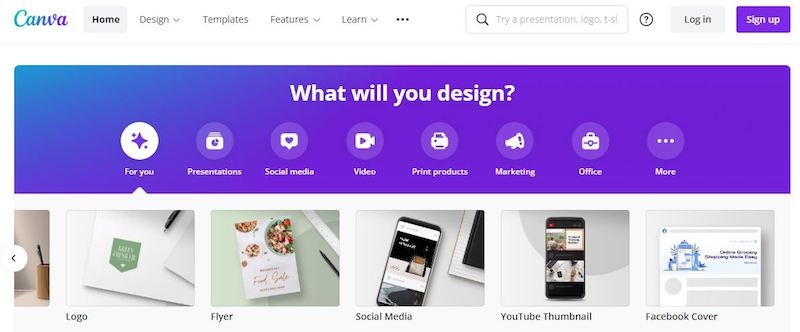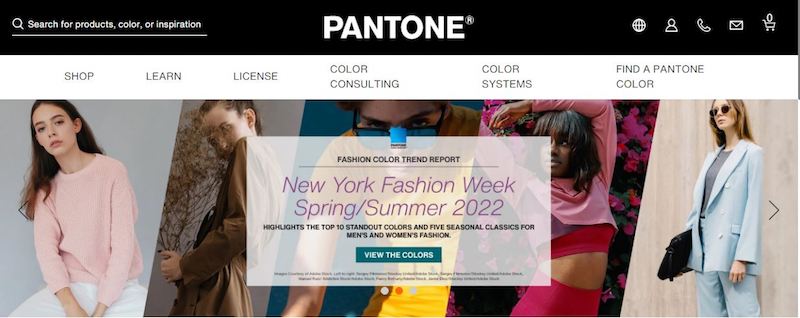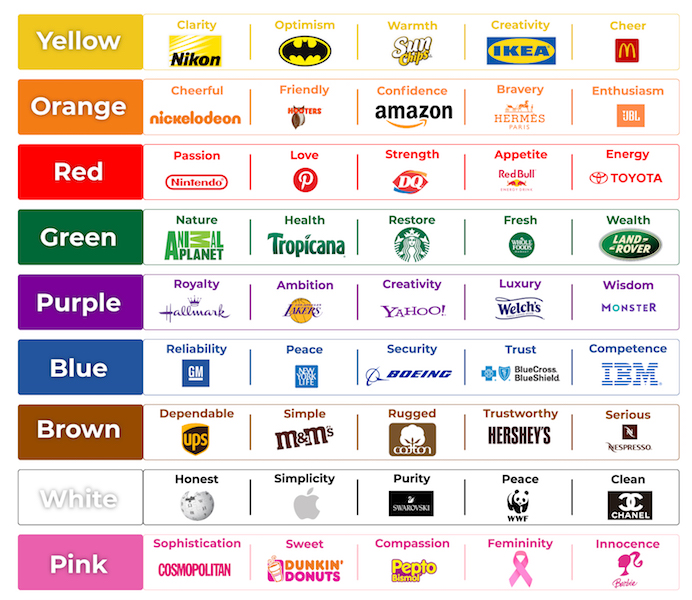Complete Guide To Small Business Logos
All brands have a logo. After picking a name for your business, choosing a logo is the next step. Some small business gurus such as David Fogarty will tell you that your logo is not very important when you are first starting and that you can change it later once you prove your product. At North Consulting Services we agree that starting your small business is most important, but starting on the right foot gives you a leg up and saves rebranding expenses later. Your branding does not have to be expensive. It is an important way to build trust, highlight your values and stand out from your competitors.
Your small business’s logo is the first impression for your brand and is a building block from which your promotional materials and website are formed.
Why Does My Small Business Need A Logo?
We like to describe your logo as your business’s avatar. Attracting the right customer to your brand is essential. By matching the style, feel, and aesthetic that is most likely to resonate with your clients, you can increase sales. Logos inform customers about your brand, set the mood of your interaction and set expectations for quality. Logos also offer more opportunity for business growth, and you may want to hire a business growth consultant the help you assess the need for a logo.
Do I Design My Logo Myself?
Some small businesses can save money by creating their own logo with a free program like Canva. There are many YouTube videos dedicated to teaching you how to use sites like Canva. Understanding graphic design can not only help you create a logo, but also serve you well down the road as you move on to more complex branding, advertising, packaging and social media strategies.

While some are confident using their artistic abilities to create their own branding, others would rather hire a professional. Budget conscious small business owners may opt to hire a graphic designer from overseas. With clear direction and an investment in time, many small business owners have had success with this method. If your business prefers to work with someone local, a digital marketing agency might be your best option. Make sure to review their portfolio first, as agencies are often the most expensive option. If you want to work with a local firm but can’t afford an agency, an ad on Facebook Marketplace or Craigslist might find you a freelancer in your area willing to work for less. While this might be less costly, they will not carry insurance and most will not accept a credit card.
Logo Inspiration

In order to start brainstorming ideas, we suggest establishing your brand identity, doing market research and establishing your aesthetic. To make sure your logo conveys your brands personality, you should ask yourself some simple questions:
What is important to my clients?
What problem does this business solve?
What differentiates my business from others?
What would I write if someone asked me to describe my business in one sentence?
If your future customers could write one sentence about you, what do you hope they would say?
Once you have asked yourself some basic questions about your brand’s identity, it is time to survey the market. We recommend making a list of the top ten competitors in your space. We do not suggest to copy them, but rather see what style and feeling they are portraying to their clients. Your survey of your brand identity coupled with your evaluation of the competitive market should give you an idea of what the expectations and image for your brand should be.
Design Choices
Once you have a clear idea of what you want your brand’s logo to convey, you can start on the design. There are many different logo design styles. No singular style is right for everyone, so it’s essential to choose the design style that’s best suited to the nature of your business.
Classic: A classic style logo is simple, yet effective. It can show people that you are a reliable company and have a history of quality work. Classic logos keep it simple, with no crazy graphics, fonts or colors. Famous classic logos include: Tom Ford, Gucci, and Macy’s.
Vintage: The vintage logo style has been a favorite of businesses for a long time. They evoke a feeling of nostalgia and history, which can let customers understand that you care about the history of your business or are selling an heirloom quality product. Brown and beige color palettes work best for this type of logo. Famous logos include: Nespresso, Toblerone, and Cracker Barrel.
Modern: Minimalism is a key component of a modern logo design. Simple and modern designs show your customers that your brand is knowledgable and up-to-date. Famous logos include: Nike, Mercedes-Benz and Jordan.
Handmade: Handmade logos evoke a feeling of quality and craftsmanship. These logos can be fun and youthful or simple and sophisticated. A handmade logo shows people that your business is of the highest quality, and pays attention to every detail. Famous logos include: Burberry, Ghirardelli and Versace.
Sweet and Silly: If your brand is looking to appeal to a younger or casual customer, a unique or quirky logo may be appropriate. A quirky style combined with fun and colorful symbols or illustrations are used to create feelings of warmth and happiness. Famous logos include: Baskin Robbins, Tostitos, and Pinterest.
Types Of Logos
Oftentimes in concert with deciding on the style of your logo, you must determine the type of logo you wish to have. There are seven main types of logos:
- Abstract Logos: By using abstract geometric shapes, companies can create a pictorial that represents their brand. Abstract logos are powerful because they can be formatted for use in social media marketing without losing any of their meaning. Famous abstract logos include PlayStation, Spotify and Pepsi.
- Mascot Logos: Choosing a cartoon as your brand’s ambassador can be a fun way to create an identity that is relatable to your clients. Brands that rely on youth and operate in the food or entertainment market, can use mascot logos effectively. Famous mascot logos include KFC, Pillsbury and Pringles.
- Combination Marks: By including both text and images, combination marks allow a brand to have a graphic supported by text. By having a logo with more than one part, brands can split the design when needing to create a more streamlined look, or for use on social media or packaging. Famous combination marks include Lacoste, Target and Rolex.
- Emblem: Often a badge or a crest, emblem logos are comprised of a font inside of an icon or symbol. Often meant to signify or represent meaning, emblem logos can represent a company’s pedigree, be used to represent strength and can look smart on packaging. Famous emblem logos include Starbucks, Warner Brothers and BMW.
- Wordmark: Using meaningful, symbolic typography coupled with an on brand color, logos consisting of a test-only typographic can make a powerful statement. While bold, their simple nature makes it very difficult to protect a wordmark logo with a copyright. Famous wordmark logos include Netflix, eBay and Google.
- Lettermark Logos: Often confused with wordmark logos, lettermark logos are also text based logos, but are comprised solely of a company’s initials. Some people also refer to lettermark logos as monograms. This style of logo is great for companies with long or complex names that may benefit from a succinct logo. Famous lettermark logos include LG, HBO and CNN.
- Pictorial: Sometimes known as a logo symbol or a brand mark, pictorial logos employ an image that becomes synonymous with the brand. Famous examples of pictorial logos include Twitter, Apple and Shell.
What Do Logo Colors Mean?

Logo colors are designed to evoke certain feelings in customers. Consulting the chart above can help you understand how some of the world’s largest brands use color effectively to represent their brand to their clients.
Experts recommend no more than three colors in your logo, with many successful logos having two or fewer. Looking to opposite sides of the color wheel is recommended because opposing colors will contrast well. If you need help picking complementary colors, drawing inspiration from brands you respect or using a color palette generator can be helpful. Your logo will form the base of your brand style guide so make sure the colors will work well throughout your marketing materials and website.
Logo Fonts
If your logo contains writing, choosing the right font to compliment the image or illustration in your logo can help inform customers of the nature of your business. There are four main font types used for logos:
•Serif fonts: Serifs are the “little feet” at the bottom of the letter. This is a classic look and can be used with many designs. Serif fonts work great with vintage or classic designs due to their simplicity and old-fashioned look. Popular serif fonts include: Times New Roman, Garamond and Casion.
•Sans serif fonts: If your business wants a more modern and clean look, this may be the best font for your logo. They are similar to serif but do not contain little “feet” at the bottom of the letters, like the text used in this blog. Popular sans serif fonts include: Helvetica, Proxima Nova and Futura.
•Script fonts: Script fonts are meant to look handwritten. They can be used for classic logo designs, or for something more fun and vibrant. The handwritten style of script fonts evokes a feeling of personalization and class. Popular script fonts include: Broadley, Monarda and Raksana.
•Display fonts: Display fonts are highly decorative and meant to catch the eye. If your business is quirky or unique, display fonts can help showcase your aesthetic to your customers. Popular display fonts include: Brandon Grotesque, Bourton and Spock.
Uses And Sizes For Your Logo
Logos are used to identify your brand, so it will be displayed on every platform you use to market your brand. It is important that the logo you choose can be formatted for social media media platforms, advertising and packaging. Social media can play a big role in reaching your customers, and having the right logo size to fit each platform is important for a professional image.
Below is a chart showing the different logo sizes recommended for the most common social media platforms.
Image/Thumbnail Posts Size by Pixels (px) | Profile Image Size by Pixels (px) | Cover Image Size by Pixels (px) | |
Facbook | 1200 x 630 px | 170 x 170 px | 820 x 312 px |
Min: 440 x 220 px Max: 1024 x 512 px | 400 x 400 px | 1500 x 500 px | |
1080 x 1080 px | 110 x 110 px | N/A | |
Youtube | 1280 x 720 px | 800 x 800 px | 2560 x 1440 px |
Pineterest | 1000 x 1500 px | 165 x 165 px | N/A |
1200 x 1200 px | 300 x 300 px | 1536 x 768 px | |
TikTok | 1080 x 1920 px | 200 x 200 px | N/A |
The cornerstone of many businesses is their website. This is where customers can learn more about your company, your product and how you conduct business. Your logo will be at the top of every page of your website, so having it displayed correctly is vital. Most website builders automatically format the logo for each page, so you do not need to worry about dimensions. However, we recommend using a PNG file when inserting your logo into the website, as PNG’s offer the best readability and formatting ability when compared to other file types.
If your small business plans on selling merchandise or using packaging with your logo on it, there are different sizes we recommend for that as well. For small print (e.g. souvenirs or small bags or boxes) we recommend your logo be 500 px or more. For large print (e.g. t-shirts or large bags) we recommend 1024 px or more. Having the right pixel size for your logo ensures that it does not appear fuzzy or stretched.
Understand Your Options
Choosing the right logo can be difficult. One of the best ways to find out which logo works best for you is by getting feedback from friends, colleagues, current customers or by hiring a small business consulting firm. Hiring a small business consulting firm to coach you through the branding process can alleviate stress and help your business choose a professional image that will impress clients for years to come. We looking forward to you contacting us at North Consulting Services so that we can talk about your company’s image.

